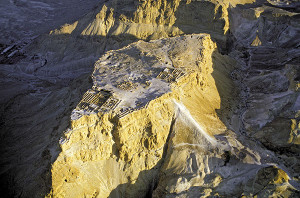24 C.E. – 79 C.E. Pliny the Elder
 Judaea Is Part of Roman Provinces of Syria; Balsam; The Sea of Galilaea
Judaea Is Part of Roman Provinces of Syria; Balsam; The Sea of Galilaea
The Naturalis Histroria of Pliny includes references to Judaea and the Jews. Most of the references relate to the natural features of the country and to its products ― above all to the remarkable properties of the Asphaltitis and its bitumen (Nos. 203, 204 and 207). Pliny dwells on the superiority of the balsam over all other aromatic shrubs and stresses that it has been vouchsafed only to the country of Judaea; he also gives us a description of the balsam shrub (No. 213).
Most important, however, are the chapters Pliny devotes to Judaea in the geographical books of his Naturalis Historia (No. 204). Judaea is described, after Egypt, among the first areas in Syria. Pliny distinguishes Judaea from Idumaea, though not very clearly. He also implies the well-known division of the Jewish population into Judaea proper, Galilaea and Peraea. (e.g. Area of the Essenes)
Like some other ancient authorities, Pliny also refers to the Jordan and the Lake Genessareth (e.g. the Sea of Galilee). The celebrated fortresses of Gamala, Machaerus and Massada, all three of which played a prominent part in the Great War between the Jews and the Romans, are mentioned by him.
The Essenes, The Dead Sea, Massada, Samaria, Judah, Galilee, Syria
Naturalis Historia, V, 66-73
(70) Beyond Idumaea and Samaria stretches the wide expanse of Judaea. The part of Judaea adjoining Syria is called Galilee, and that next to Arabia and Egypt, Peraea. Peraea is covered with rugged mountains, and is separated from the other parts of Judaea by the river Jordan.; (71) The source of the river Jordan is the spring of Panias drom which Caesarea described later takes its second name. It is a delightful stream, winding about so far as the conformation of the locality allows, and showing itself to the people who dwell on its banks, as though moving with reluctance towards that gloomy lake, the Dead Sea, which ultimately swallows it up, its much-praised waters mingling with the pestilential waters of the lake and being lost.; (72) The only product of the Dead Sea is bitumen, from which it derives its name [scil. Asphaltites]. The bodies of animals do not sink in its waters, even bulls and camels floating; this has given rise to the report that nothing at all can sink in it. It is more than 100 miles long, and fully 75 miles broad at the broadest part but only 6 miles at the narrowest.; (73) On the west side of the Dead Sea, but out of range of the noxious exhalations of the coast, is the solitary tribe of the Essenes. Day by day the throng of refugees is recruited to an equal number by numerous accessions of persons tired of life and driven thither by the waves of fortune to adopt their manners. Thus through thousands of ages (incredible to relate) a race in which no one is born lives on forever: so prolific for their advantage is other men’s weariness of life! Lying below the Essenes was formerly the town of Engeda, second only to Jerusalem in the fertility of its land and in its groves of palm-trees, but now, like Jerusalem, a heap of ashes. Next comes Massada, a fortress on a rock, itself also not far from the Dead Sea. This is the limit of Judaea.; Moreover bitumen, a substance generally sticky and viscous that at a certain season of the year floats on the surface of he lake of Judaea called Asphaltites, adheres to everything touching it, and cannot be drawn asunder except by a thread soaked in the poisonous fluid in question.
Source: Menahem, Stern. Greek and Latin Authors on Jews and Judaism. Volume I (p. 465, 468)



